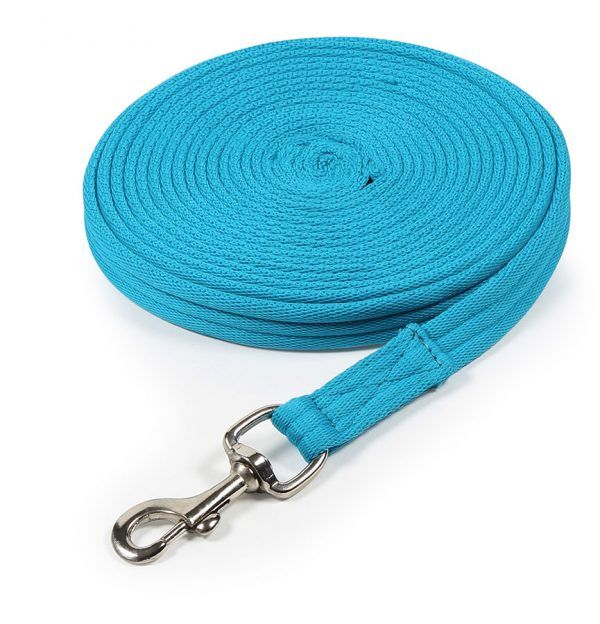Harnesses
Comfort & function
A good harness can make walking a dog an easier task, a bad one can create behaviour problems. Below we look at a number of harnesses that we recommend to help with your training. Remember, no tool will do the training for you.
Starting to look at harnesses
There are no tools that fix behaviour for us, whether it is pulling on leash while walking, jumping up, dragging behind, or barking and lunging at people or dogs. There are tools that can make your life a little easier while you work with your trainer through the issues but they will not do the work for you , unfortunately. Some tools can do more damage to your dog’s behaviours so it is important to only use tools of good quality and that are not intended to teach your dog via discomfort. The last thing we want is to add more work to your training journey.
Any tool changes how your dog moves to a greater or lesser degree so for dogs that are prone to injuries or are of a breed that are predisposed to certain types of joint conditions or gastrointestinal disorders it is particularly important to take your time and find tools that best suit them and how they move. For any gait assessments we always record your dog with only a collar and leash on.
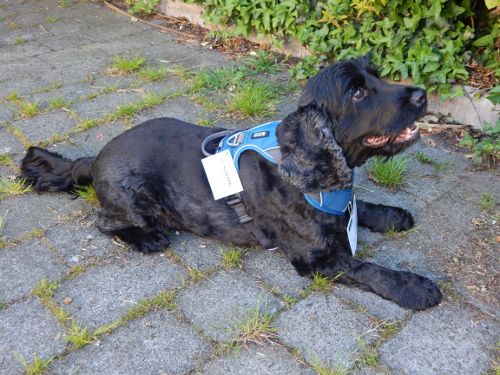
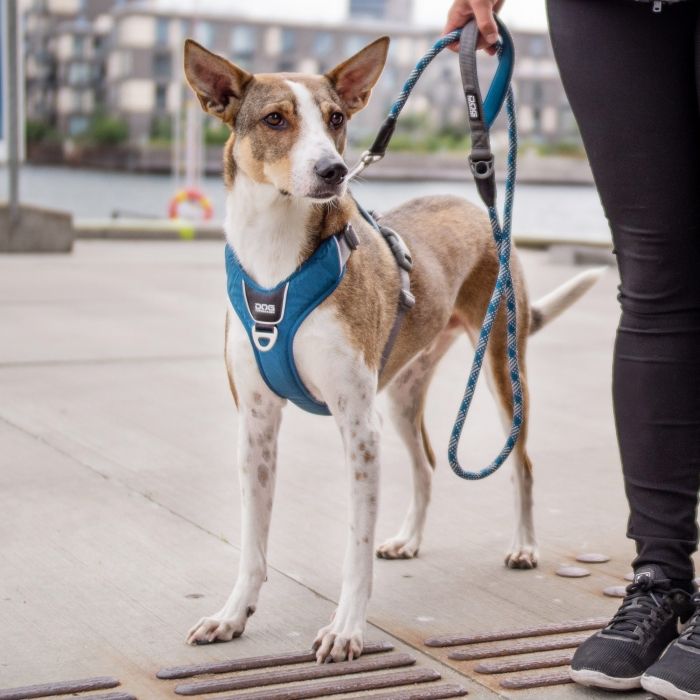
Considerations: Fit
Any harness for your dog should be a good fit. That is it shouldn’t spin around on them if the leash gets pulled or tugged. It should not cause chaffing anywhere but it is most notable under the front legs in the ‘armpits’. It should fit snugly while allowing you to put two fingers under each strap or any section that is in contact with your dog’s body. No straps or parts of the harness should be looser than this or tighter than this. If it does not allow multiple points of adjustment it is likely that it will bunch in some area on your dog.
Considerations: Growth
How old is you dog, what breed is your dog and how much growing are they likely to do in the next few months? Some harnesses are excellent in how much adjustment they allow for but always then check whether those straps work them- selves loose with movement.
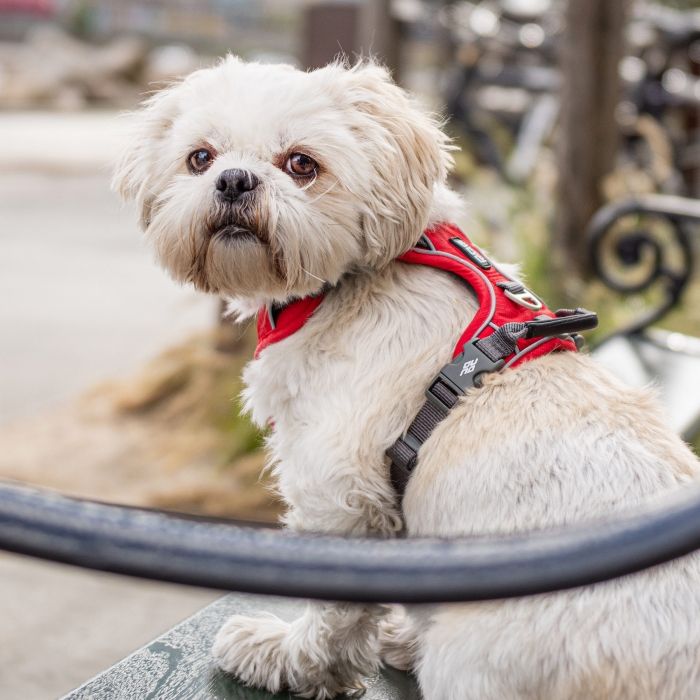
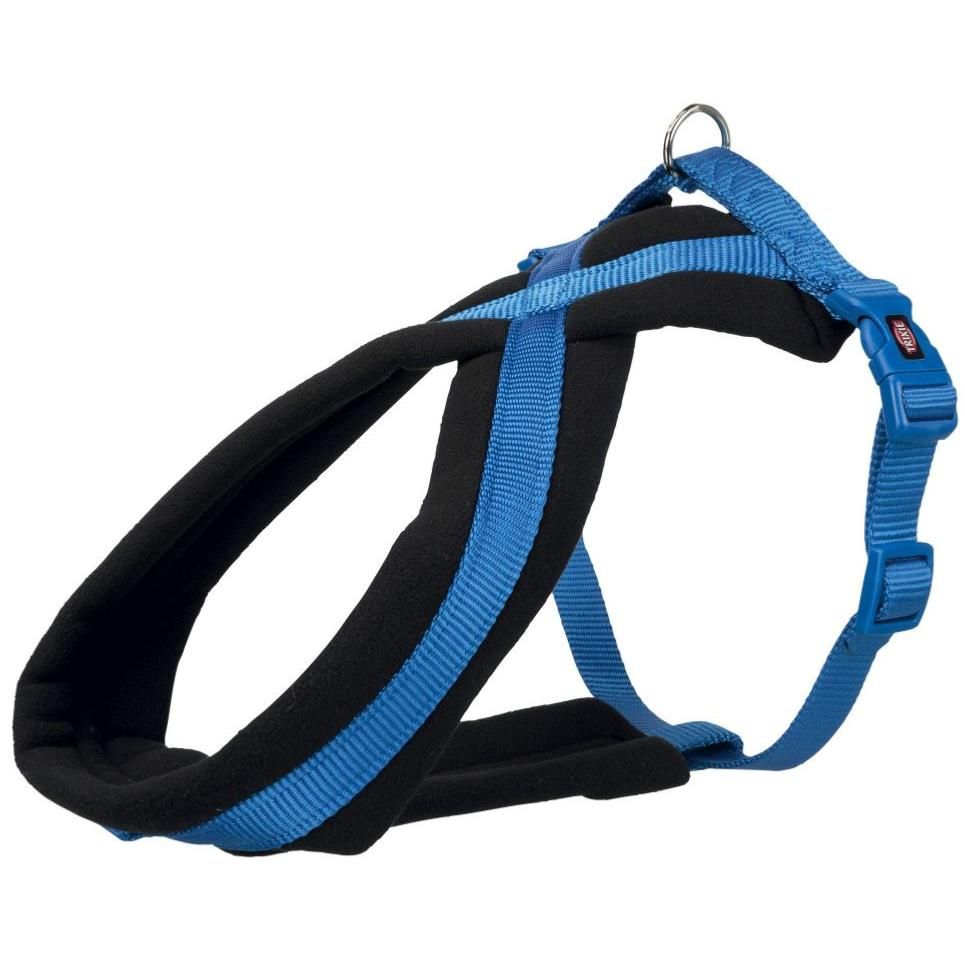
Considerations: Activity
What activity is your dog’s harness going to be used for. A harness that allows a dog to sniff a lot typically has a cross front to allow the neck to bend all the way down to the ground, such as the picture here. The location of the D-Ring on the back also dictates how far away from you the dog is meant to be when in this harness. The further in front of you they should be, such as for joring activities, the further along their back the D-Ring should be. For sled dogs, for example, the connection point is out behind them on reins rather than being along the body. For a harness to have your dog walk beside you or near enough to beside you, the D-Ring should be at the shoulder blades.
This is the Trixie Touring Harness, you can get it at ZooPlus for example.
Puppy Harnesses
Using a harness with a puppy is important to avoid putting stress or pressure on your puppy’s trachea. It will help with training in general and with their health to have them in a comfortable harness. How- ever, puppies grow quickly so getting an expensive harness in the first place can seem a little wasteful. If your puppy is not likely go grow too big then some more expensive harnesses can be bought in the first place that offer a lot of adjustment potential to account for their growth. In particular we want something soft that won’t cut in or otherwise give your puppy a bad experience of their first harness.
A harness that is great for puppies who are likely going to grow a lot over the next few weeks and months is the Trixie Comfort Soft Touring Puppy Harness. This has very extendable side straps,
has lovely soft mesh on the straps and body and under the O-Ring on the back. The clips at either side are easy to use and difficult to get puppy hair caught in them.
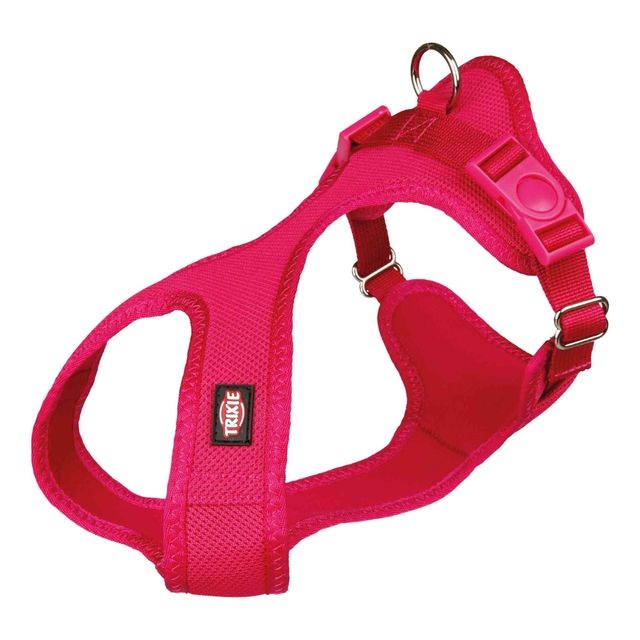
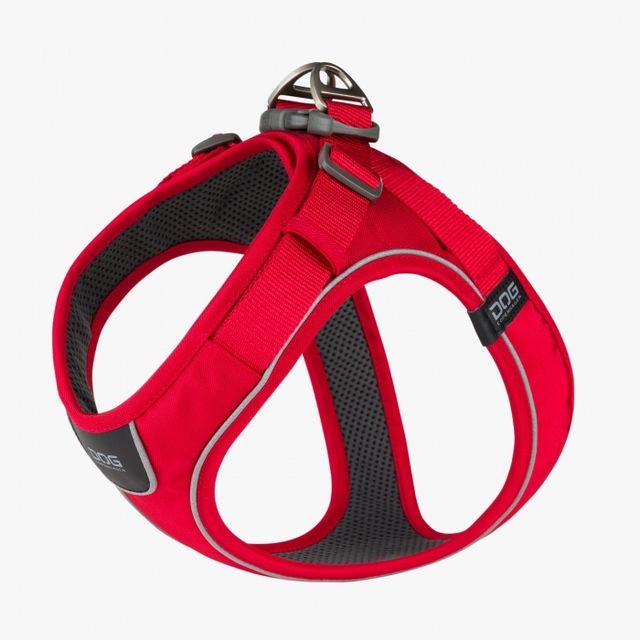
If your puppy is nervous of something going on over their head or are not likely to grow much over the coming weeks and months the Dog Copenhagen Go Walk puppy harness is a great option. It does not go over the head, rather goes on with the two front legs through the two leg holes and then closes at the top of the shoulder blades.
The leash then clips in to the two D-Rings at the top so that it ensures that there is no way for that harness to come undone. It has good adjustments but not as good as the Trixie harness.
Two-Point Harnesses
Two-Point harnesses are harnesses with a D-ring at the shoulder blades and another at the front chest, under their neck. These har- nesses are used for teaching polite walking and also are very good for very big strong dogs. If your dog pulls hard on the leash, these are the best harnesses that help you to hold on safely and also avoids teaching your dog the wrong thing.
For teaching polite leash walking, we like to use a two point harness as it gives your dog an easy and clear context change. This means that when your dog is allowed to roam around and sniff everything or is on a long line, we clip to the rear clip and if we are working on polite walking then it is clipped to the front. For dogs who are par- ticularly strong, we recommend clipping to both D-Rings.
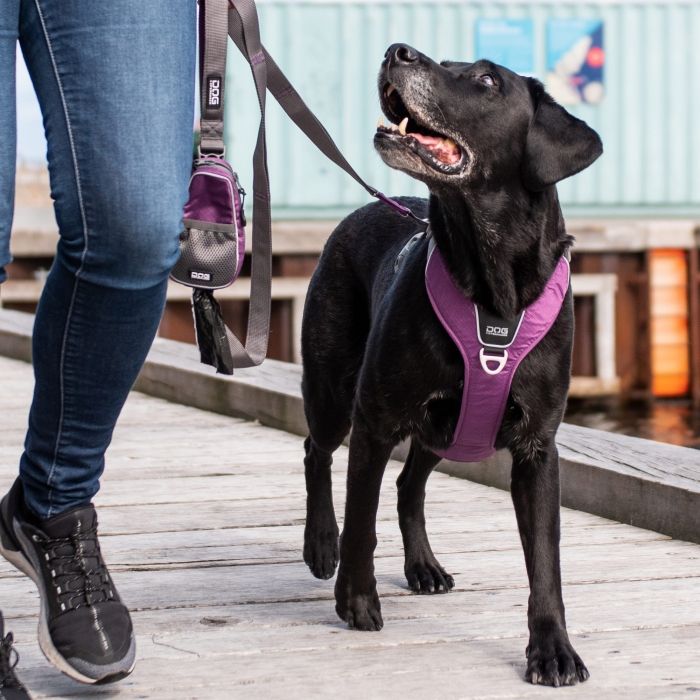
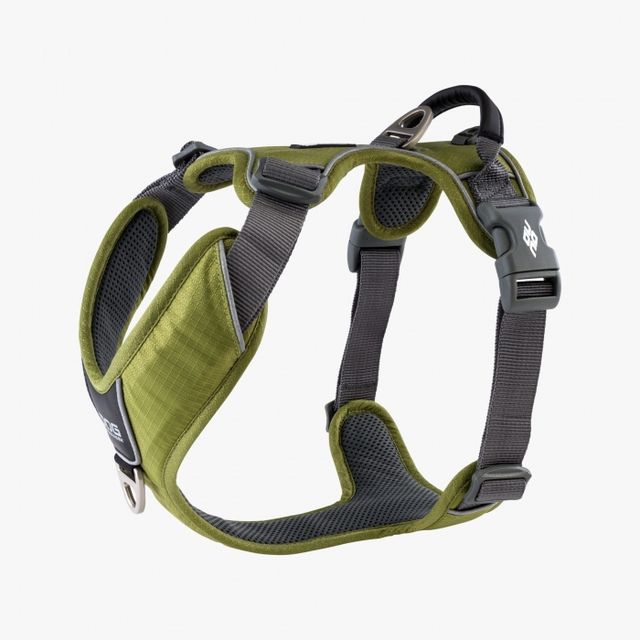
Two-Point Harnesses: Dog Copenhagen
The Dog Copenhagen harnesses typically allow for more varied sizes and shapes of dog than other brands. There is a lot of adjustment available in the side straps and the straps do not slip much with use. It has good padding under the arms,
between the shoulder blades and along the chest. This is important for a good fit and general comfort. It also avoids it from slipping around the body when under any tension. There is a strong handle at the back and a clip for a light or id tag. It was recently updated in 2022 with new materials on the clips.
Two-Point Harnesses: Ruffwear
Ruffwear are an American brand of harness that are primarily designed for the great outdoors. They are nice and rugged with lots of different harness options. Their Front Range harnesses are the ones closest to a two-point harness.
They come in a great range of colours and are as nicely padded as the Dog Copenhagen harness. They also have a good range of adjustment around the chest and a bit of adjustment around the neck. Their main downside is that the front clip point is a reinforced webbing attachment point rather than metal. This means it is fixed and any movement is taken out on the webbing. Previously you could only get this on the homepage but recently it is now available in Irish shops.
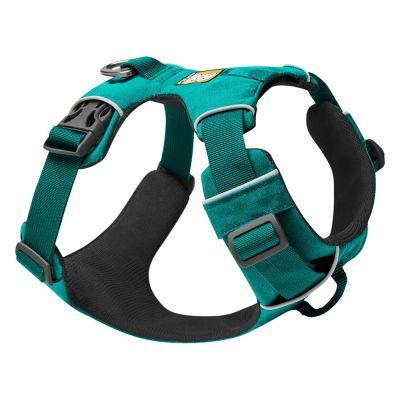

Two-Point Harnesses: Dogs Creek
The Path Finder from Dogs Creek, Figure 6 are one of Maxi- Zoo’s own brand harnesses. It is a two point harness like the other two above. It has a handle and there is a lot of scope for adjustment via the straps. We have found that the straps on this harness tend to loosen with use making it harder to use for its intended function.
The downside with most two-point harnesses is that the neck open- ing needs to be a tight fit to get over the head so that it doesn’t rotate on the body. This then needs a bit more work to teach your dog that it is comfortable and safe.
Escape Artists
A quick side note on dogs who tend to slip a collar or have learned to back out of their harness there are options to help keep your dog safe. These harnesses also tend to be good for sight hounds who are tall with a very deep chest and very narrow waist. For these dogs regular harnesses tend not to sit as well. The suitable harnesses are called web-harnesses. These have three straps under the body rather than the usual two. One across the front chest, one under the front legs and a final around the waist or further back.
Ruffwear Flagline
The Ruffwear Flagline harness is a very sturdy harness that has three adjustment points. These do not reach very far along the body so can be slightly less successful at holding on to a longer dog. The amount of adjustment is very good. They have three clip on points, one metal at the shoul- der blades but the one at the back and front are both fabric.
The connector at the back is excellent for longer line work where your dog is meant to be out further ahead of you, such as when jogging together.
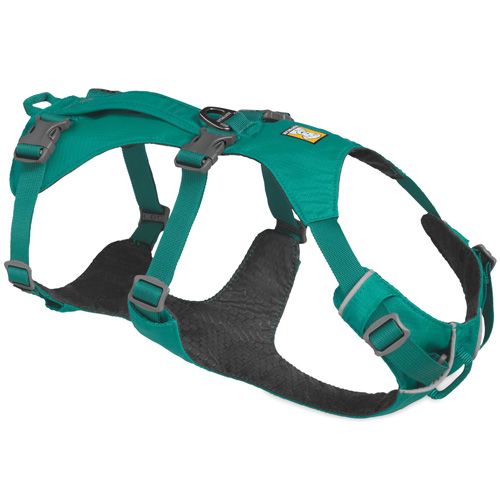
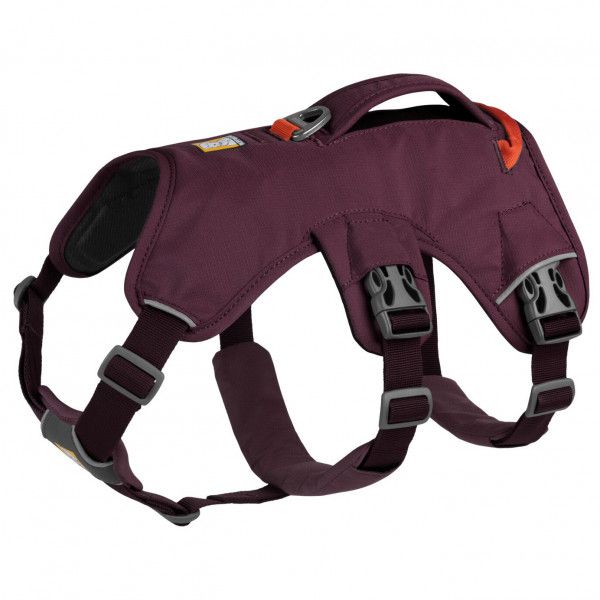
Escape Artists: Webmaster
The Ruffwear Webmaster harness is a great harness for escape artists. Again it has three connection points made of the same materials as the Flagline harness. The big difference is the amount of padding on the upper and lower parts of the harness. This makes it particularly good for helping to lift a dog up and down off surfaces. So for older dogs in particuar,
it spreads the load nicely and has a very comfortable handle.
Escape Artists: Dogs Creek
The Dog’s Creek safety harness from MaxiZoo is another good option for escape artists that is closer to home to get and try on. It has good adjustment options across the harness and comes in very good colours for visibility. As with their Path Finder harness, the straps can loosen with use.
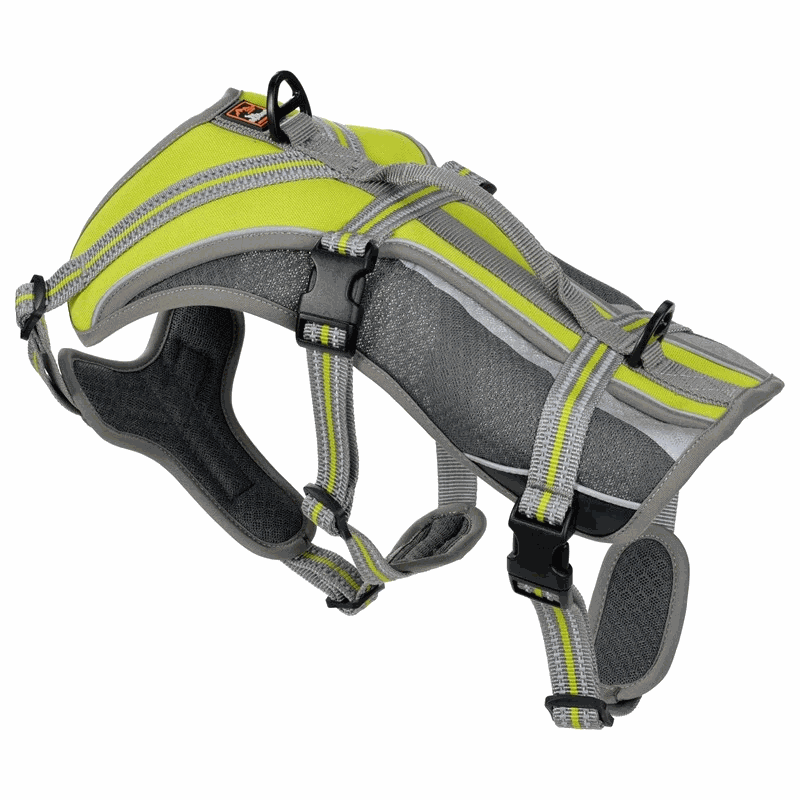
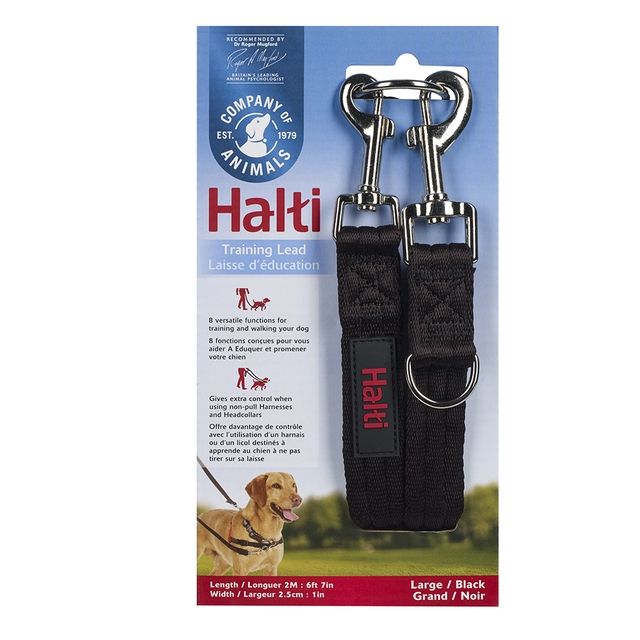
Leashes
There are a huge number of different options out there for leashes, particularly if you want different colours or to get matching colours to your dog’s harness. From a purely functional point of view, we recommend using a training leash as this gives you the most options for how to use your leash. Typically a training leash will be longer than a regular leash when opened up. It has a number of O- or D-Rings along it’s length and a clip on each end. This allows you to use the leash with different lengths by clipping one end into one of the rings along its length.
For ease of use, particularly for large and strong dogs, we recommend using the Halti training leash. It is made from padded webbing so it is very soft on your hands and extremely easy to hold. In addition, when compared to other leashes, its rings are spaced so that it can easily be tied around your waist for hands free walking or training.
We do not recommend walking your dog with a retractable leash for a number of reasons. Firstly it is easy to hurt yourself or your dog if the line gets wrapped around your finger or your dog’s leg.
Secondly, if your dog is out on the extended leash the line is difficult to see so it is easy for someone to run through between you and your dog and trip and hurt your dog. Finally, it works by creating tension, this allows it to retract or not. This is teaching your dog to pull on leash. If you want to give your dog more space to run around but still stay safe, look at getting a long line, as below.
Long Lines
Long lines are what we use for walking in the countryside where there is space but we need to keep our dogs on leash, for exam- ple when around sheep or other wildlife that should not be chased.
It is also what we use for practising recall safely. A good long line is between 5 and 10m long. They are available in pet shops but these tend to be either far too long, difficult to hold given the material or thinness of the leash, or don’t have a handle on the end.
To counter this we recommend using equestrian lunge lines on all but the smallest dogs. They come in a huge variety of colours and are extremely strong. They are made of the same material as the Halti training leash so are very comfortable on your hands and always have a handle at the end. A good source of these is the The Equestrian Warehouse.
